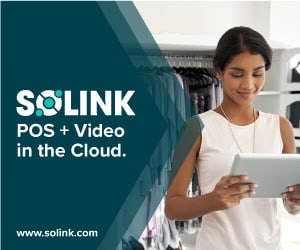“The global IoT (Internet of Things) in retail market is expected to grow from US $14.3 billion in 2015 to US $35.6 billion by 2020,” according to one of many similar market research forecasts. That represents a brisk compound annual growth rate (CAGR) of 20 per cent.
What does this mean in a practical sense? Retail, like most other industries, is in the grip of digital change, where a fine line must always be walked to ensure any new technology investments drive a tangible return.
In an effort to meet consumer demands, retailers are implementing new multi-channel or omni-channel experiences. They are now adding the technologies necessary to support new shopping options that create a whole new set of loss prevention challenges. These include BOPUS (by online, pick up in store, aka BOPIS), BORIS (buy online, return in store), mobile checkout, and purchase and release in store. More systems generating more data on a continuous basis. More data trapped in silos so that it is difficult to achieve a clear and unobstructed view of the big picture.
Mid to large retailers have extensive investments for their overall operations, particularly in loss prevention. The challenge for the loss prevention team is how to make the most effective use of all these various datasets to manage risk and reduce loss and shrink. For example, a solution could have the data integration capability to cross-reference POS data and EAS data by date and time stamp with video surveillance footage.
A cloud-based approach to unlock the power of data
This kind of data integration and analysis could be done with a software platform hosted on an on-premise server, but that has its limitations. The data must still be constantly backed up. Given the volume of data that can be generated by the various devices and systems in the modern retail environment, storage and computing capacity may become an issue. If that’s the case, hardware investments will have to be made and the IT resources dedicated to maintain them.
Issues with incomplete or unreliable data can also arise when integrating new systems that enable new capabilities such as BOPIS on top of existing legacy systems. Back-end storage platforms must be built in a way that can support new system launches with end-to-end integrity.
Another option is to consider a cloud-based alternative, or a hybrid cloud option that supplements any on-premise server infrastructure in which a retailer has already invested. Cloud service providers may have the capabilities to help with those new system launch challenges, but of course, do your homework.
For the loss prevention team, cloud services that use a cost-effective subscription-based SaaS (Software-as-a-Service) model can avoid the need for an actual physical server on site and deliver a whole new level of functionality and ease of use. SaaS-based solutions also provide peace of mind by serving as a constant back up and long-term archive of data for any number of purposes – to support investigations into wrongdoing, to protect the retailer against liability, and to serve as a training aid for staff and to improve customer service.
Before investing in any solution, the first step is to consider how cloud-based data integration and analysis can further the department’s goals to stem that bleed from the bottom line.
The next step is to consider the broader implications for the business as a whole and understand how this emphasis on making the most effective use of available data demands a new level of collaboration with other departments within the organization.
Breaking down silos between people, not just data
In this day and age, the IT department and loss prevention team must shift their mindsets away from being two separate areas to understanding how both departments can support and enhance the others.
That’s because loss prevention data collection and analysis can yield valuable insights in other ways. For example, data tracking foot traffic patterns and buyer behaviour both online and in-store can be used to create a more engaging customer experience or reveal how a store layout should be changed or where retail displays should be placed for the greatest impact.
But it’s very common that the larger the organization, the more siloed it becomes, with each team out to protect its own interests. The irony of course, is that the IoT is all about breaking down silos – data ones, to be sure – but the importance of the human element can’t be overlooked, either. From marketing and merchandising, to loss prevention, IT and the executive ranks, collaboration is key.
The need for a trusted integration partner
To overcome these internal challenges and drive the required level of collaboration, retailers need a trusted external partner – a technology integrator that takes an agnostic approach when putting together the right package of hardware, software, network infrastructure and cloud resources to get the job done.
This integrator is accustomed to working in a cross-functional way, across the breadth of the retail organization. It has the institutional knowledge to assist in building effective strategies designed to help a loss prevention team evolve from a bottom-line protection group to top line growth champions.
 Conclusion
Conclusion
The IoT is here to stay and loss prevention leaders must come to grips with how they are both impacted by and can support their company’s IoT roadmap. They have at their disposal powerful new tools with which to reduce loss and shrink, if they know how to use them effectively.
Making the most effective use of data with the aid of cloud-based computing resources is key, with the help of an objective and experienced technology integrator such as Solink. We have the technical expertise to cost-effectively integrate your existing video hardware investments with data from other key retail systems such as POS and EAS. Our cloud-based platform gives you the power to quickly get to the root cause of loss and shrink and adapt to the deployment of new retail technologies.
But this isn’t just about the loss prevention department. As the retail landscape becomes more complex and more challenging, a loss prevention team must consider how its data-driven insights can be used to drive the profitability and the competitiveness of the entire retail enterprise. But how can the loss prevention team influence the often-rigid technology road map of the IT department?
Solink can help with that, too. Our team has the cross-functional project management experience to help align your entire organization around the idea of turning your loss prevention data into strategic business data.
To learn more please visit Solink’s website.



